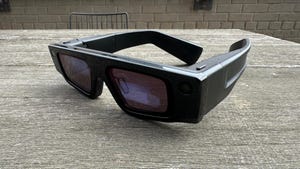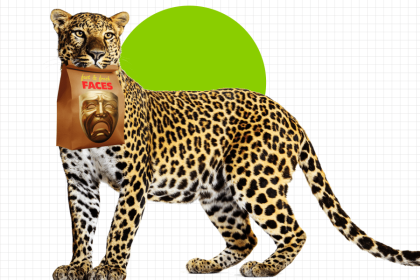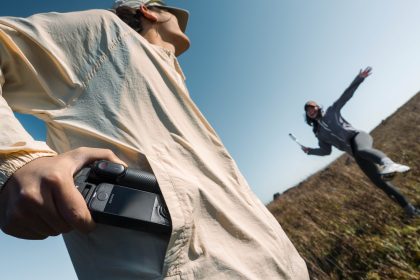As Meta and Google prep next-gen glasses, Snap’s AR Spectacles are evolving to keep up.
Scott Stein Editor at Large
I started with CNET reviewing laptops in 2009. Now I explore wearable tech, VR/AR, tablets, gaming and future/emerging trends in our changing world. Other obsessions include magic, immersive theater, puzzles, board games, cooking, improv and the New York Jets. My background includes an MFA in theater which I apply to thinking about immersive experiences of the future.
Expertise VR and AR | Gaming | Metaverse technologies | Wearable tech | Tablets Credentials
Nearly 20 years writing about tech, and over a decade reviewing wearable tech, VR, and AR products and apps Among the flood of smart glasses expected in the next couple of years, Snap is preparing its own new pair of Spectacles. CEO Evan Spiegel told me the new augmented reality glasses will be smaller than the thick, developer-focused set I’ve tried before. I stepped back into those developer Snap Spectacles glasses again recently to test-drive Snap OS 2.0, part of what the company is planning in advance of those glasses arriving.
What I realized is that Snap’s pushing forward into territory that Meta and Google haven’t fully entered yet, but will. And Snap’s news is clearly trying to preempt Meta’s expected reveal of display-enabled glasses with gesture controls this week.
Don’t miss any of our unbiased tech content and lab-based reviews. Add CNET as a preferred Google source.
Snap is an interesting player in the AR glasses arena because, right now, it’s pretty much the only one making a truly self-contained pair that can run a variety of 3D apps with hand-tracking controls. Spectacles in their developer version are rough-edged, and Snap doesn’t even make prescription inserts that match my eyes, but the apps it runs feel sort of like what Apple’s Vision Pro can do, shrunk way down. And developers are already using them a fair amount to workshop real-world outdoor AR experiences that other hardware can’t do yet.
Snap’s video of overlaying a gallery of videos into a room with Snap OS 2.0. On actual Spectacles, the field of view is a narrow fraction of this.
SnapSnap’s upgraded OS has a better web browser, along with a gallery-viewing app for looking at video captures made on the glasses and an app to browse Snap’s own vertical social videos and comments.
I tried all of those, but the experiences that surprised me were live translation, a generative AI assistive tool called Spotlight, and a surprise port of a fitness game called Synth Riders that I got to play.
Snap’s Spectacles in their current form are weirdly bulky and have a limited vertical field of view that feels like projecting a phone screen in the air. They can’t accommodate my prescription yet, either, so I had to make do with a step-down insert and squint a bit. But their hand-tracking and 3D spatial features feel, at best, like a mini version of the Quest 3 and Vision Pro.
There aren’t any captures that can show off what I demoed that impressed me, but I’ll explain them as best I can.
Snap’s spectacles are designed entirely to overlay 3D experiences into your physical space. The lenses are transparent, but the effect feels more like VR-based mixed reality.
Scott Stein/CNET Pop-up AI in the real world Live translation is everywhere now, from Apple’s latest AirPods to Meta’s Ray-Ban glasses. Snap’s spin on its glasses translation shows pop-up text boxes with translation captions on the fly, but what made it interesting to me was that these boxes would float directly below the speaker’s head in 3D space. Because Spectacles can float 3D objects and even flat 2D screens in space at different depths, it ended up making following the conversation feel more organic. Instead of feeling like my glasses had interrupting text, the text seemed more embedded in the world around me.
That feeling continued with the assistive AI demo, where I wandered up to appliances in the room and asked what they did. Pop-up instructions with suggested steps were suddenly overlaid over parts of the thing I was looking at. A coffee machine was suddenly labeled with helpful steps. Or a refrigerator. Or a bunch of condiments.
I’ve seen demos like this before, in a sense, but this was apparently done on the fly using generative AI. Would the AI get the steps and information right? I don’t know. I only used it a couple of times, and it seemed OK… and the steps seemed to guess relatively accurately what the parts of each appliance were, and what the condiments were.
I appreciated how the labels were in large and clear text, which could make this an interesting model for future assistive glasses.
But I’d want smaller glasses, ones that work with my eyes…and ones I could wear all the time. It’s unclear how close Snap will get to those goals.
Me wearing Spectacles last year. The design hasn’t changed yet, but the 2026 model should be smaller.
Scott Stein/CNET Fitness aspirations, too? A final game app I tried surprised me, too. Synth Riders, a popular hand-tracking rhythm-based VR fitness game, was playable on the Spectacles. It felt rough to play, and Snap’s limited field of view for the glasses meant the experience wasn’t as expansive as on the Quest 3 or Vision Pro, but it’s a little sign of how glasses will aspire toward fitness gaming. Meta might be trying to enter that market soon, too, at Meta Connect.
Fitness is already the biggest reason I use VR every week. Putting fitness games into glasses is the obvious next step, if someone can find a way to do it without compromising the experience.
While Synth Riders on existing Snap Spectacles seemed clunky, I’m extremely curious what Snap has in store for its consumer-edition glasses next year that could have better processing, size and battery life. Fitness in glasses like those might make a lot more sense.
Snap clearly announced these OS moves to get a step ahead of Meta’s imminent reveal of its own next-gen smart glasses, but it’s a sign of how many players are entering the glasses space in the next year. At some point, someone’s going to figure out full standalone AR glasses, and Snap’s still got its tech in the game.












